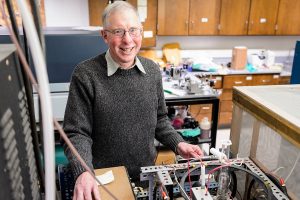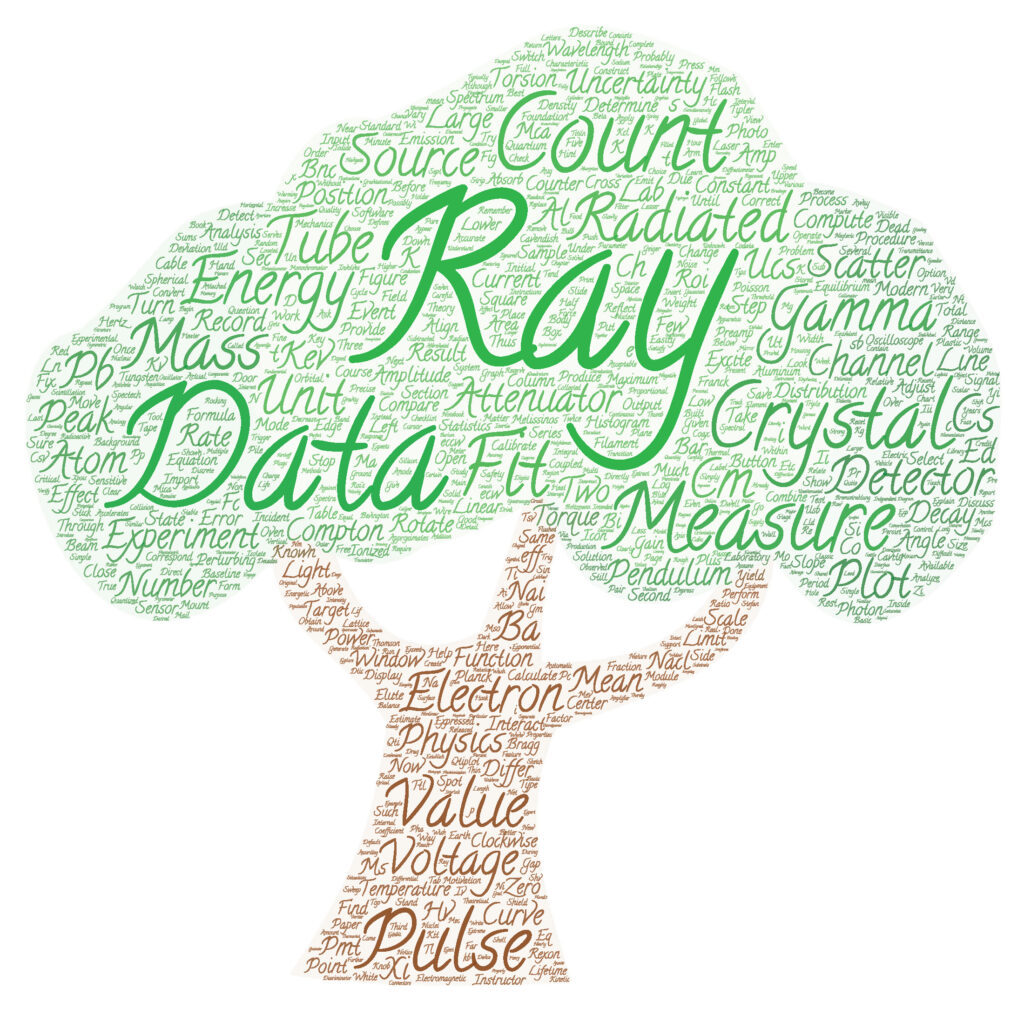 Colleagues and friends are encouraged to send thoughts and memories about Prof. Jim Lawler, who passed away January 29, 2023. Please email your submission to Sarah Perdue (saperdue@wisc.edu).
Colleagues and friends are encouraged to send thoughts and memories about Prof. Jim Lawler, who passed away January 29, 2023. Please email your submission to Sarah Perdue (saperdue@wisc.edu).
View the department obituary
View the State Journal obituary
Thad Walker
Jim Lawler was a meticulous and dedicated experimentalist. In the mid ‘80s Jim and his students built a versatile system for generating nanosec scale pulses of light of virtually any wavelength from the VUV to the near infrared. The system included nonlinear crystals and a 100 atm Raman shifter that was beautifully engineered to get him into the VUV range. Combining this with hollow cathode discharge sources, he could measure transition probabilities for the low ionization stages of virtually the entire periodic table. With students and his long-time collaborator Elizabeth Den Hartog, I suspect the total number of publications from this system was over 100.
In the ‘90s Jim led a long series of seminal investigations using ultrasensitive absorption spectroscopy at the SRC synchrotron in Stoughton. He exploited the exceptionally stable SRC beam and a deep understanding of highly linear CCD arrays to detect extremely small concentrations of atomic and molecular species with applications to problems such as CVD diamond growth and searches for exotic molecules that might exist in the interstellar medium.
Jim was also a state-of-the-art practitioner of methods of classical grating and Fabry-Perot spectroscopies. He never seemed happier than when he was mapping out complex spectra using his custom echelle grating spectroscopes. For years he made many trips out to Kitt Peak to use the Fourier Transform spectrometer there to study transition probabilities as well.
I take that back, what he really loved most was applying his results to important problems in astronomy. His trustworthy transition probability measurements had a myriad of applications and Jim really enjoyed his collaborations with astronomers over the years.
Jim loved teaching intermediate and advanced labs, communicating his love for careful and precise experimental work to generations of students.
Jim had some wonderful quirks as well. He was a devoted user of the Forth programming language, and was particularly fond of the radiation transport Monte Carlo simulations he wrote in that language. He was cranky about upgrading perfectly workable computers and software, and proudly stayed many versions behind. His most precious experimental tools, such as nonlinear crystals and CCD arrays, were carefully stored and displayed on shelves in his office right next to his array of photographs of his beloved daughters, and across the room from his meticulously maintained ‘80s era Schwinn bicycle that he rode over 10,000 miles on.
The crystals, photos, and bicycle inside his neatly organized office symbolize for me the Jim Lawler I knew.
Note: Prof. Walker made a presentation for “Jim Fest,” a celebration of Prof. Lawler that was held a few years ago. The presentation can be viewed here.
Franz Himpsel
I admired Jim’s optimism and enthusiasm toward everything — no matter what happened.
He helped me a great deal getting started in academia (coming from industrial research). And he helped my family finding the right place in Madison.
Betsy Den Hartog
I worked with Jim almost continuously for nearly 4 decades, starting as a graduate student in his group from 1984. There was a brief gap from 1991 – 1994 when I had my first child, but when Jim became department chair in 1994, he asked me to come work with him to keep the radiative lifetime experiment that he had designed up and running. The rest, as they say, is history. Jim and I have collaborated on his laboratory astrophysics projects ever since.
Jim – thanks for being a good mentor, collaborator and friend. You are missed!
